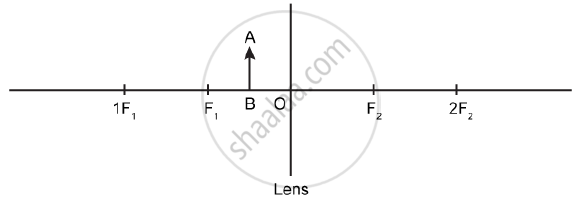Advertisements
Advertisements
प्रश्न
A student did an experiment with a convex lens. He put an object at different distances 25 cm, 30 cm, 40 cm, 60 cm and 120 cm from the lens. In each case he measured the distance of the image from the lens. His results were 100 cm, 24 cm, 60 cm, 30 cm and 40 cm, respectively. Unfortunately his results are written in wrong order.
Rewrite the image distances in the correct order.
उत्तर
Since the focal length is a constant quantity, we have to pair the object distance(u) and the image distance (v) such that the focal length always comes out to be the same. From the above argument, we get the correct order of the image distance as 100 , 60 , 40 , 30 and 24. The reason being, as the object is carried far from a convex lens, the image is formed closer to the lens.
APPEARS IN
संबंधित प्रश्न
Write one condition where it does not bend when entering a medium of different optical density.
An object AB is placed between O and F1 on the principal axis of a converging lens as shown in the diagram.

Copy the diagram and by using three standard rays starting from point A, obtain an image of the object AB.
If an object is placed at the focus of a convex lens, where is the image formed?
What kind of lens can form:
an inverted magnified image?
A parallel oblique beam of light falls on a convex lens. Draw a diagram to show the refraction of light through the lens.
A convex lens is placed in water. Its focal length will ______.
Which lens can produce a real and inverted image of an object?
Why do we say that the ‘2F’ and ‘F’ points of a convex lens can be regarded as a sort of ‘turning points’ as far as the nature of the image formed by it is concerned?
Can one bum a piece of paper in daylight by just using a convex lens instead of a match or any direct flame? Support your answer with the help of an appropriate ray diagram.
